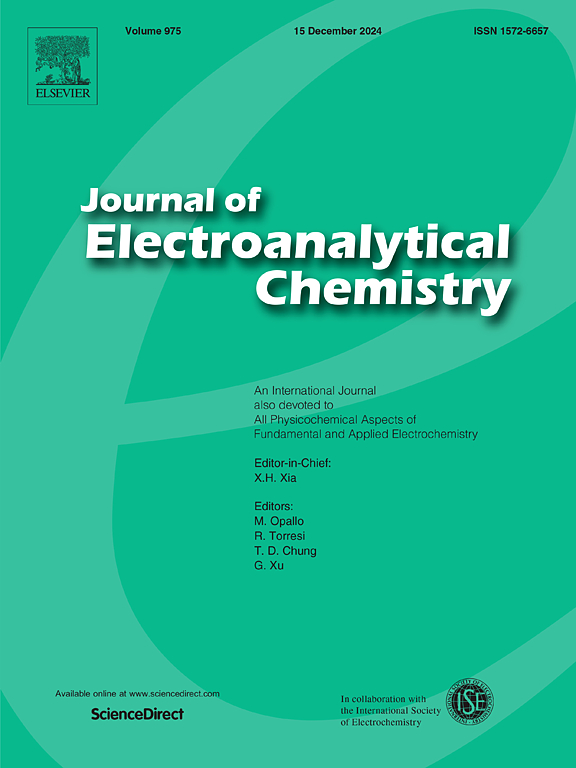Metal-free borocarbonitrides as electrocatalysts for the hydrogen evolution reaction under alkaline media
IF 4.1
3区 化学
Q1 CHEMISTRY, ANALYTICAL
引用次数: 0
Abstract
This study presents the successful production of metal-free borocarbonitrides (BCN) based on graphene as carbon sources, and its application for hydrogen evolution reaction (HER) in alkaline medium (1 M KOH) via one-step pyrolysis. Synthesis parameters such as the temperature and calcination time were optimized in order to improve the electrocatalytic activity being 10 h and 900 °C the optimal conditions of calcination. These conditions generated a low oxygen content and a stable graphene-like structure doped with B and N. In-depth XPS analysis revealed the strong N-B bond formed during the calcination, allowing the creation of a stable and homogeneous B![]() C
C![]() N ternary material. The ratio of B:N were optimized obtaining for a ratio 0.5:40 the most active catalyst. This catalyst reached an overpotential at 10 mA cm−2 of 295 mV in 1 M KOH after an activation under Linnear Sweep Voltammetry (LSV) and chronopotentiometry, which is close to that observed for a commercial 20 % Pt/C catalyst.
N ternary material. The ratio of B:N were optimized obtaining for a ratio 0.5:40 the most active catalyst. This catalyst reached an overpotential at 10 mA cm−2 of 295 mV in 1 M KOH after an activation under Linnear Sweep Voltammetry (LSV) and chronopotentiometry, which is close to that observed for a commercial 20 % Pt/C catalyst.

求助全文
约1分钟内获得全文
求助全文
来源期刊
CiteScore
7.80
自引率
6.70%
发文量
912
审稿时长
2.4 months
期刊介绍:
The Journal of Electroanalytical Chemistry is the foremost international journal devoted to the interdisciplinary subject of electrochemistry in all its aspects, theoretical as well as applied.
Electrochemistry is a wide ranging area that is in a state of continuous evolution. Rather than compiling a long list of topics covered by the Journal, the editors would like to draw particular attention to the key issues of novelty, topicality and quality. Papers should present new and interesting electrochemical science in a way that is accessible to the reader. The presentation and discussion should be at a level that is consistent with the international status of the Journal. Reports describing the application of well-established techniques to problems that are essentially technical will not be accepted. Similarly, papers that report observations but fail to provide adequate interpretation will be rejected by the Editors. Papers dealing with technical electrochemistry should be submitted to other specialist journals unless the authors can show that their work provides substantially new insights into electrochemical processes.

 求助内容:
求助内容: 应助结果提醒方式:
应助结果提醒方式:


